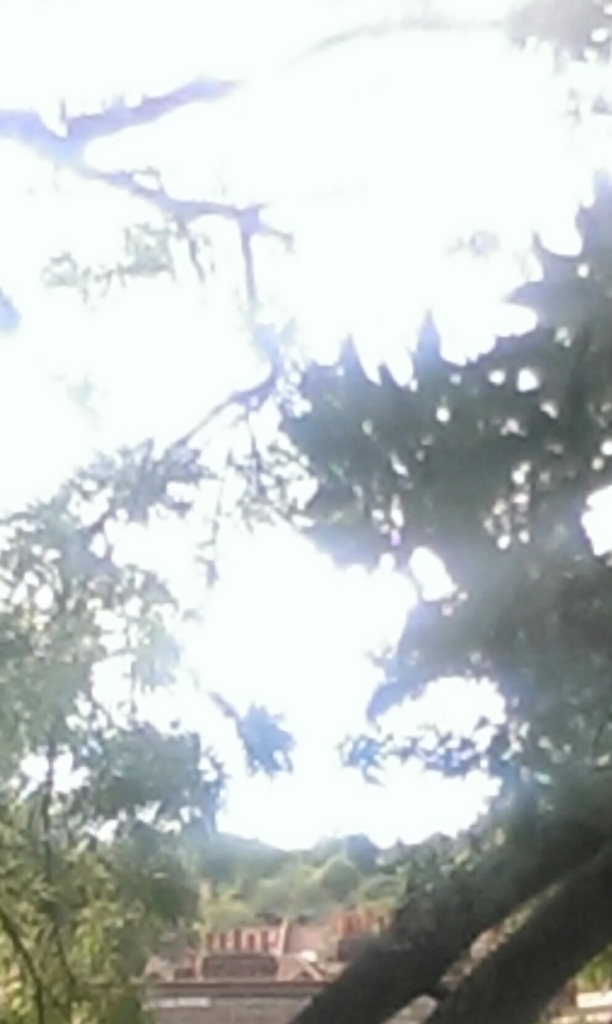
Image by Hestia Peppe
I’m in London but I send this writing to my editor in New York. Those who read it could be anywhere.
The horizon is the name given to the limit of what can be seen: the visual context relating to a specific moment in time and space. It is the distance from the viewer at which points on a theoretical horizontal plane theoretically converge.
All viewpoints entail horizons. From any given viewpoint the position of the horizon is not in question. Every viewpoint is unique.
I move and it shifts with me but when I speak of the horizon I am not in doubt about that of which I speak.
Here in the city at the end of summer, the corners of and roofs of buildings and the edges of leaves against the sky obscure it. That straight line, which seems constant, and only changes with the course of journeys and great undertakings, cannot be seen.
I first learned to draw the horizon as a kid when, during the two years I lived in an island country, I copied from a friend a little older than I, Jem: a daughter of Australian expat missionaries who had lived most of her life there. She would draw the sunset over islands, the horizon always the first line she drew. Before Jem I had always drawn two lines, a green one for the earth and a blue one for the sky, a house in the middle separating the two. From Caro and Ellen and Harry, ‘local children’, not expats, I learned to speak their lingua franca, Pijin — can’t tell how I did so, just that it became the way I spoke with my new friends. Years later, years after we’ve long stopped writing to each other, my friends find me on Facebook and I read their statuses boxed in blue and hear the music of their speech again as I read and am filled with awe that the key to these patterns could still be woken from my memory.
Perhaps they will even read this.
Today, as often now, everything is stormy with context collapse. You think you know everything but you don’t.
In realities increasingly dominated by written verbal communication the boundaries between everything disintegrate into fractal patterns. When you zoom in, any seemingly homogenous surface, even Facebook, can become a terrain of complexity: a landscape.
We call this place the internet / we call it literature / we call it the filter bubble / we call it the news / the new / we call it art / we call it television.

Hestia Peppe’s current column at Full Stop is concerned with horizons, perspective and place. The specificity of viewpoint and context provide the basis for a practice of receptive and observational writing fully situated and alive to that which limitation renders possible.
I’ve needed to update my operating system for years but every time I think about doing it, I’m like, I’ve got, like, thirty-three tabs open… A couple of days ago I finally decide to do it. I spend two hours trying to use my ancient, never before activated Apple ID so that I can download the new system but it says my UK card’s UK address is not in the UK. Nothing I can do comes up with a different result. I check to see that the Union Jack is displayed in the correct part of the window. It is. I start a help chat and I have to download an app so that Joan can share my screen. I know Joan is a real person rather than a bot because I can see her confusion in the way that her red arrow points at what she wants me to click at: she points to the wrong thing, changes her mind, has to type a clarification, she types slowly. Joan passes me on to Paulo, a senior advisor. He gets me to check the flag again. Eventually he tells me that this problem needs to be resolved by a special team and that he will email me when it is resolved and that this will take somewhere between forty eight and seventy two hours. I can tell that he can tell that I am getting angry.
The next morning I realize I can just use a different card.
Before the invention of broadcast communication the distance to the visible horizon at sea defined the maximum range of communication as well as that of perception. In the Solomon Islands I was told that, when the waves are too high for them to see the horizon or the stars, the boatmen can navigate by the feel of the waves.
Perspective is a technology for constructing the illusion of three dimensions. First used by Italian artist Ambrogio Lorenzetti in 1344, it was further developed and popularized by, among others, Filippo Brunelleschi from whom it spread throughout Italy and the world. Since that time it has become the dominant means with which humanity imagines and represents spatial relationships.
Once, at an art event in London, during the Q&A I tried to ask the panel about the differences between representations of class in the UK and America and I got accused of nationalism. Perhaps that was because all comparisons are assumed to be competitive. I find it shocking that my more-successful-than-me peers couldn’t see the difference between cultural specificity and national identity. As if one should care about which imperialism is the most correct.
The English language constructs a vast empty horizon. Those of us who speak it imagine we are all in the same place.
With particular thanks to my friend Orsi, for reminding me that, though it’s the only one that I still speak; the English language is not the only language.
This post may contain affiliate links.







